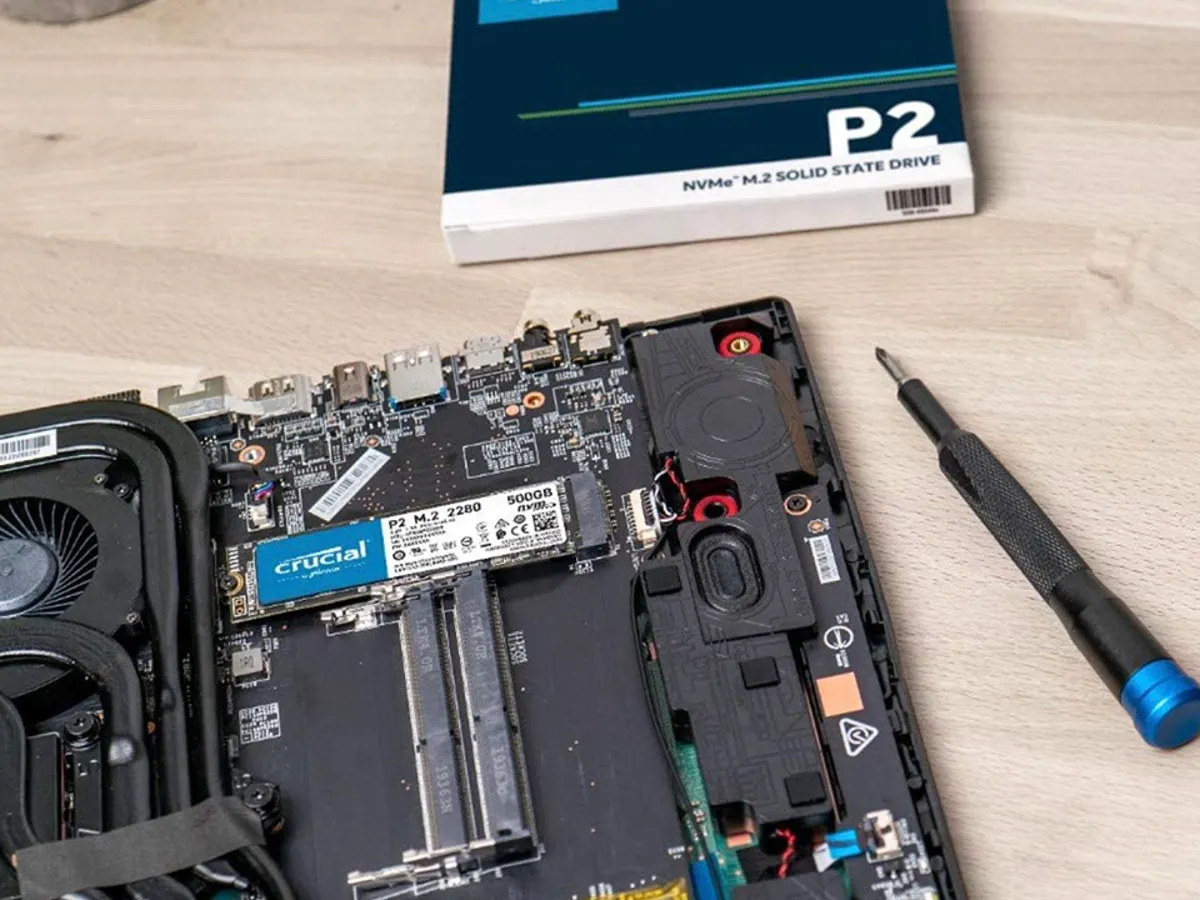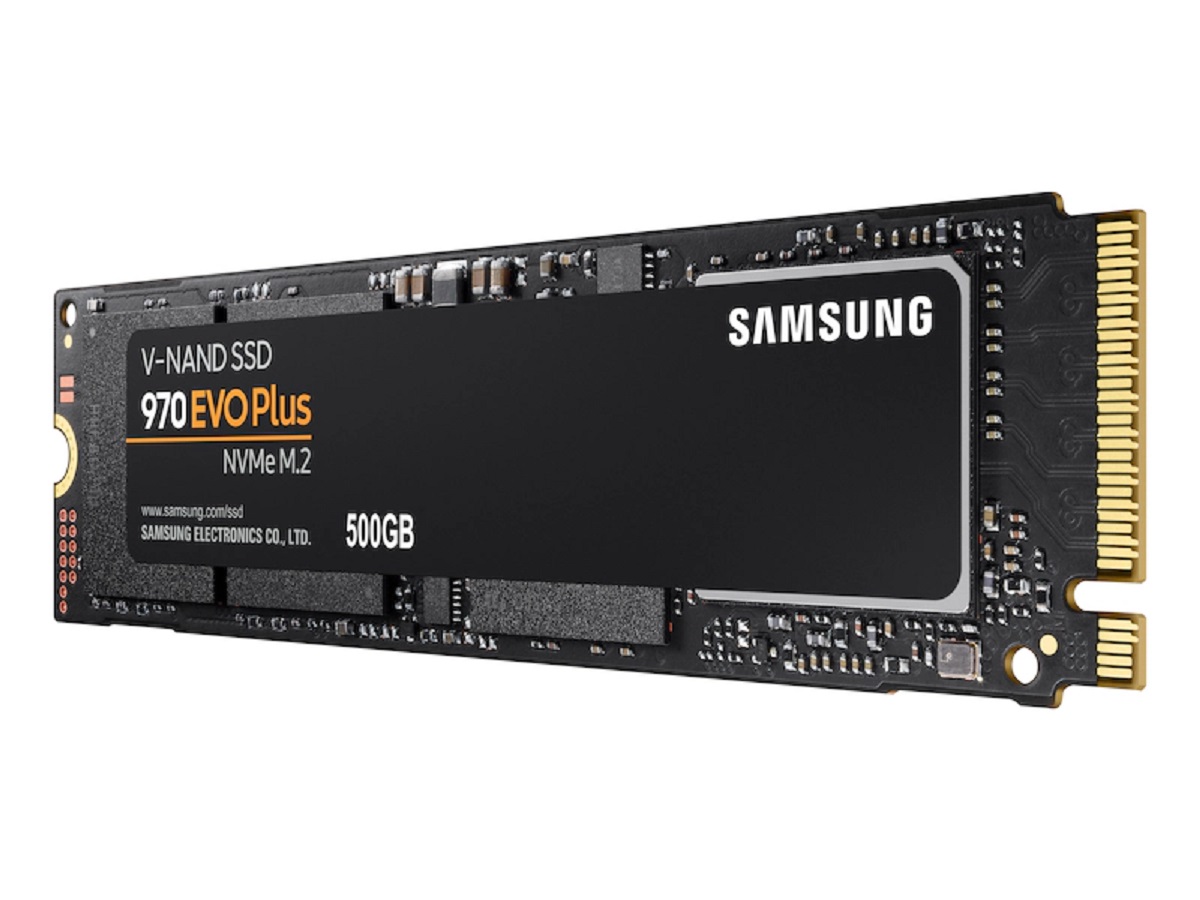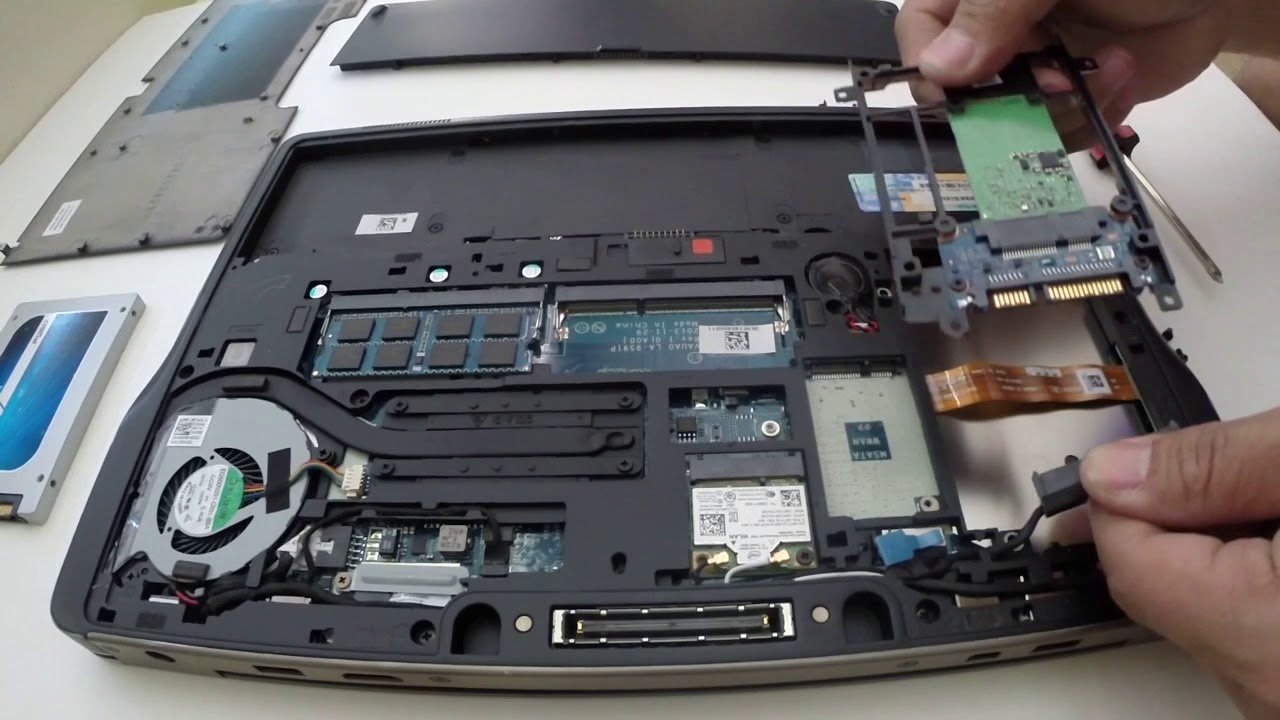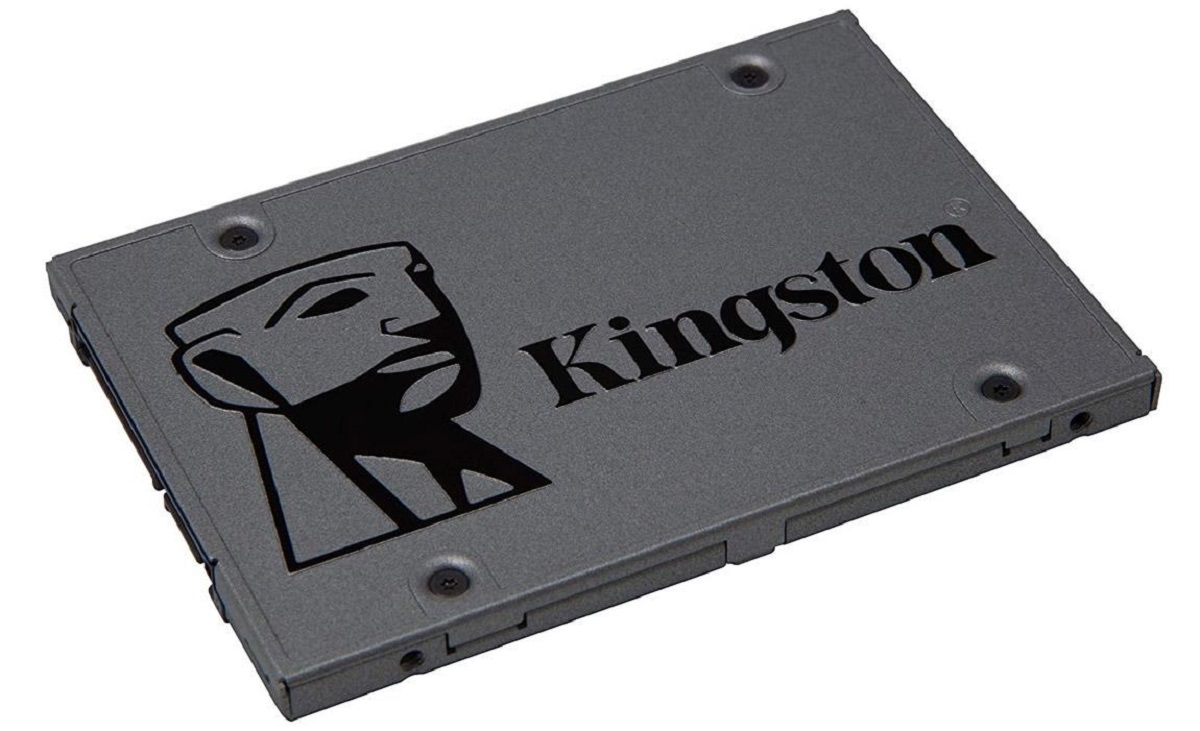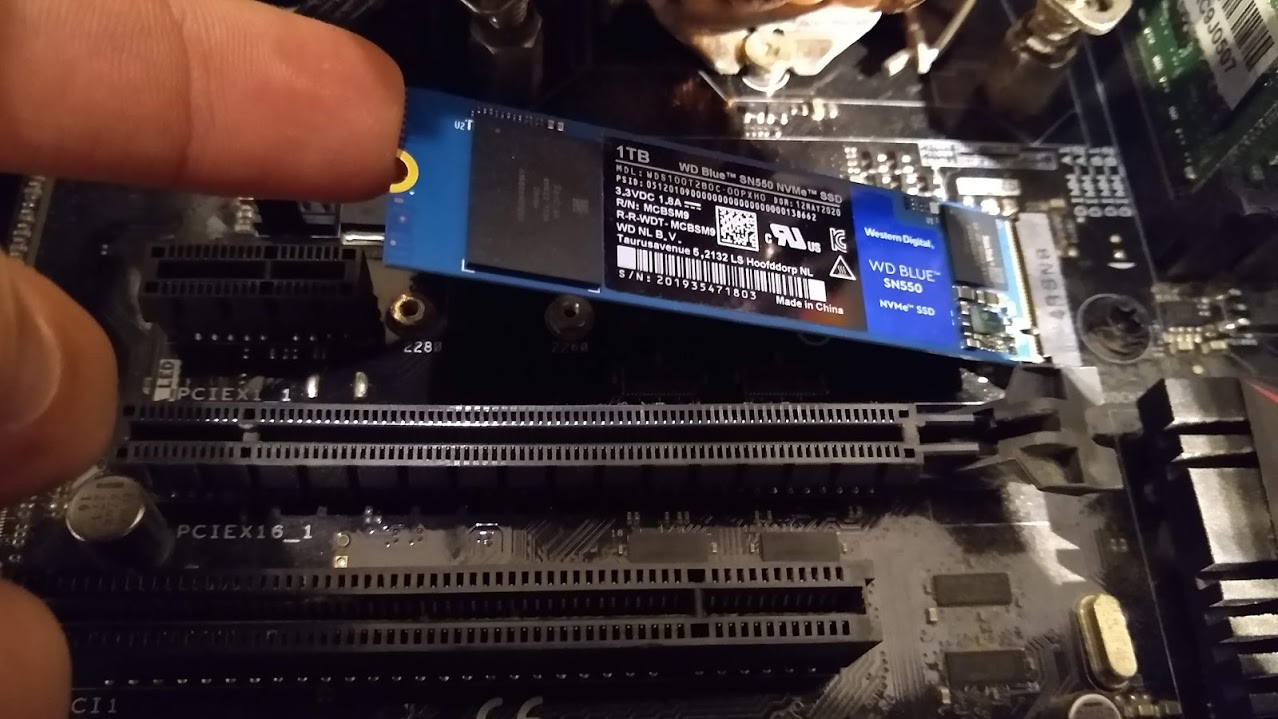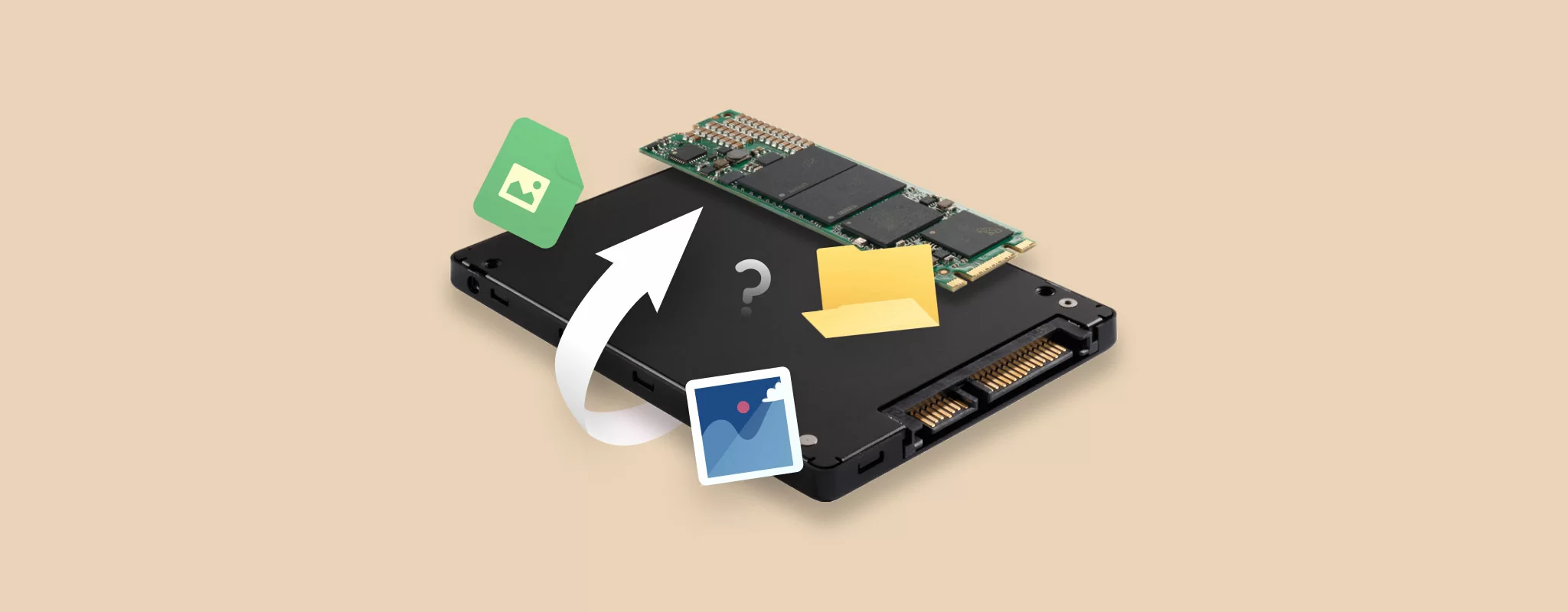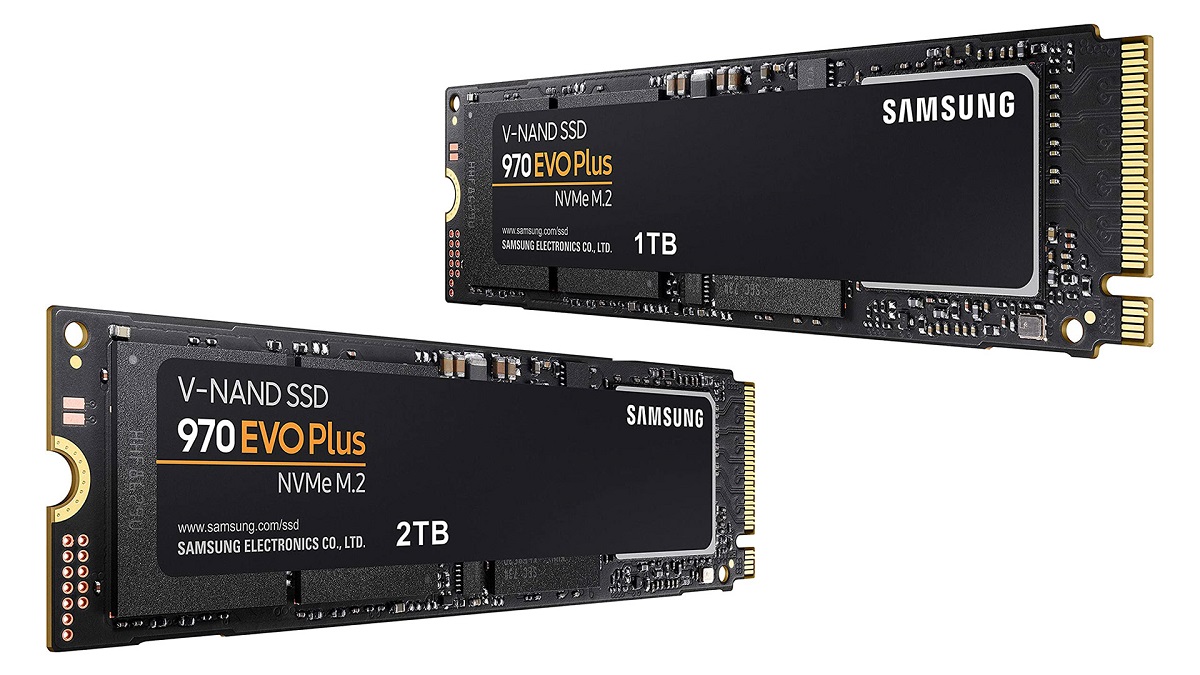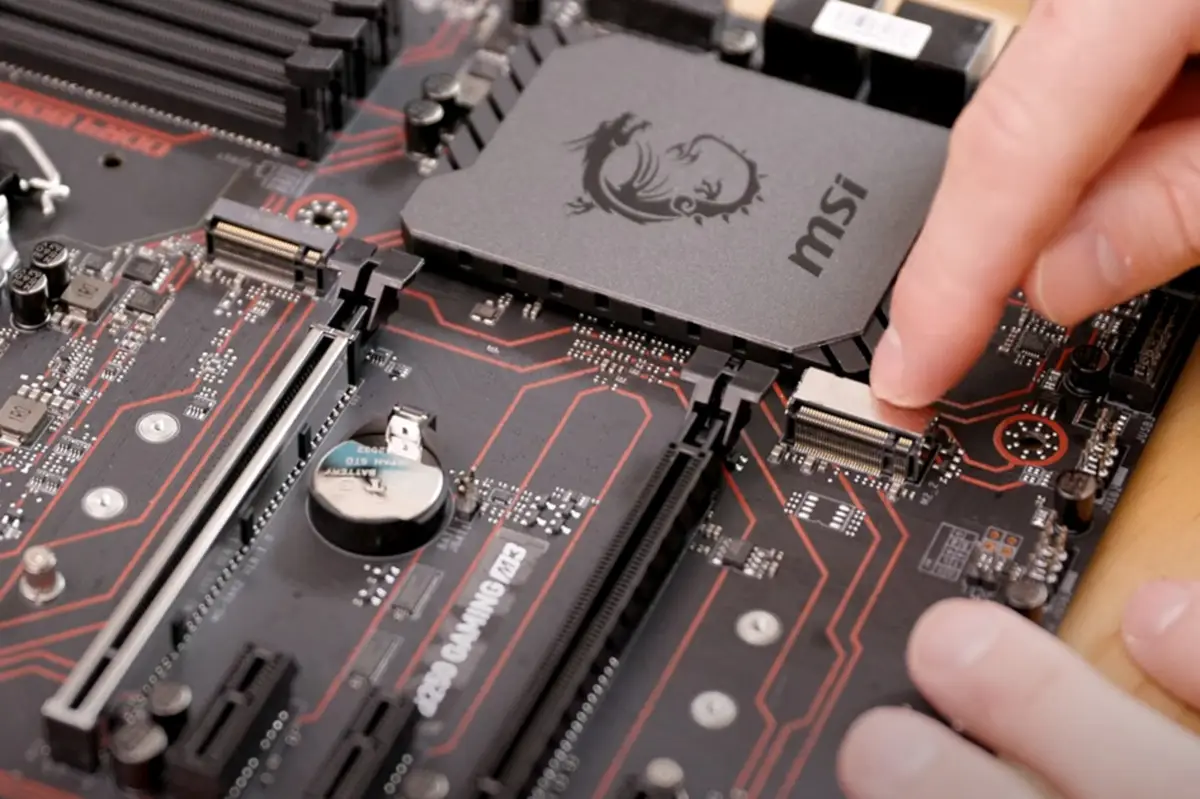Introduction
Welcome to the world of M.2 SSDs, where speed and efficiency meet compact form factors. M.2 SSDs, also known as Next Generation Form Factor (NGFF) SSDs, have quickly become a popular choice for those seeking lightning-fast storage solutions for their desktops, laptops, and ultra-thin devices.
Unlike traditional 2.5-inch SSDs, M.2 SSDs are smaller in size and connect directly to your motherboard via the M.2 slot, eliminating the need for cables or drive bays. This streamlined design not only saves space but also reduces latency and enhances data transfer speeds, making M.2 SSDs ideal for high-performance computing tasks.
However, before you can harness the power of an M.2 SSD, it is crucial to understand how to properly format it. Formatting an M.2 SSD allows you to prepare it for use by creating a file system and organizing the storage space. In this guide, we will delve into the intricacies of formatting an M.2 SSD on various operating systems, including Windows, Mac, and Linux.
Whether you are setting up a brand-new M.2 SSD or repurposing an existing one, this guide will equip you with the knowledge and tools needed to format your M.2 SSD effectively. So, let’s dive in and explore the step-by-step process of formatting an M.2 SSD on different operating systems to unleash its full potential.
What is an M.2 SSD?
An M.2 SSD is a solid-state drive that utilizes the M.2 form factor for storage. M.2 SSDs are a revolutionary advancement in storage technology, offering faster speeds, smaller sizes, and high levels of performance. They have become increasingly popular in recent years due to their compact design and impressive data transfer capabilities.
The M.2 form factor was introduced as an alternative to traditional 2.5-inch SSDs to address the limitations of size and connectivity. M.2 SSDs are slim, flat, and typically shorter in length compared to their 2.5-inch counterparts. This makes them an ideal choice for devices where space is at a premium, such as ultrabooks, mini-PCs, and compact desktops.
One of the key advantages of an M.2 SSD is its incredible speed. M.2 SSDs support various high-speed interfaces, including SATA III, PCIe (NVMe), and AHCI, enabling them to achieve significantly faster read and write speeds than traditional hard drives or older SSDs.
Another important feature of M.2 SSDs is their versatility. They come in different lengths, such as 2242, 2260, and 2280, to accommodate different storage capacities. Additionally, M.2 SSDs can be used as a primary boot device or as secondary storage in conjunction with other drives, allowing users to customize their storage setup according to their specific needs.
M.2 SSDs also benefit from being power-efficient and generate less heat compared to traditional storage options. This is especially advantageous for laptops and small form-factor devices that prioritize battery life and temperature management.
As technology continues to advance, M.2 SSDs have become more affordable and accessible to the average consumer. The storage market now offers a wide range of M.2 SSD options from various manufacturers, allowing users to choose the capacity, speed, and price point that suits their requirements.
In summary, M.2 SSDs are a game-changer in the world of storage technology. Their compact design, blazing-fast speeds, and flexibility make them an excellent choice for those seeking high-performance storage solutions. Whether you are a gamer, content creator, or professional needing reliable and efficient storage, an M.2 SSD is sure to deliver the performance you need.
Why do you need to format an M.2 SSD?
Formatting an M.2 SSD is a crucial step in preparing it for use. Here are a few reasons why formatting is necessary:
1. Creating a File System: Formatting allows you to create a file system on the M.2 SSD, such as NTFS, FAT32, or exFAT. The file system determines how data is organized, stored, and accessed on the drive. Without a file system, the operating system cannot interact with the drive effectively.
2. Removing Previous Data: If you are repurposing an M.2 SSD or using one that has been previously used, formatting is essential to erase any existing data and start fresh. This ensures that any remnants of old files or configurations are removed, providing a clean slate for your storage needs.
3. Maximizing Performance: Formatting helps optimize the performance of the M.2 SSD. By aligning data sectors and clearing any fragmentation, formatting ensures that data is stored more efficiently and can be accessed quickly. This results in improved read and write speeds, enhancing the overall performance of the drive.
4. Resolving Compatibility Issues: Some M.2 SSDs may come pre-formatted in a specific file system that is not suitable for your operating system or intended use. Formatting the M.2 SSD allows you to choose a file system that is compatible with your preferred operating system, ensuring seamless integration and proper functionality.
5. Personalization and Customization: Formatting gives you the opportunity to customize the M.2 SSD according to your preferences. You can choose the file system, allocate drive letters, and define the storage capacity for specific partitions. This flexibility allows you to tailor the M.2 SSD to your individual needs and optimize storage management.
Formatting an M.2 SSD is a straightforward process that ensures the drive is ready for reliable and efficient operation. Whether you are setting up a new M.2 SSD or repurposing an existing one, formatting is an essential step to ensure compatibility, performance, and data integrity.
Pre-formatting preparations
Before diving into the formatting process, there are a few important preparations to consider. Following these steps will help ensure a smooth and successful formatting experience for your M.2 SSD:
1. Backup your data: Before formatting your M.2 SSD, it is crucial to back up any important data stored on the drive. Formatting will erase all existing data, so it is essential to have a copy of your files stored elsewhere to avoid permanent loss.
2. Check for firmware updates: Visit the manufacturer’s website and check if there are any firmware updates available for your specific M.2 SSD model. Updating the firmware can enhance performance, address compatibility issues, and provide general stability improvements.
3. Gather necessary tools: Ensure you have the necessary tools ready for the formatting process. These may include a Phillips screwdriver (if your M.2 SSD requires installation), an M.2 standoff (if not pre-installed), and an M.2 screw (if not included).
4. Prepare the M.2 slot: If you are installing the M.2 SSD on a desktop motherboard, check if there are any specific guidelines or requirements for the M.2 slot. For example, some motherboards may require you to remove a protective cover or adjust the slot’s compatibility mode (AHCI or NVMe) in the BIOS settings.
5. Update your motherboard BIOS: It is advisable to update your motherboard’s BIOS to the latest version before installing and formatting an M.2 SSD. This ensures compatibility and may resolve any issues related to the M.2 slot or other components.
6. Disconnect power: For safety purposes, ensure that your computer is powered off and unplugged before installing or removing the M.2 SSD. This will prevent any accidental damage to the drive or other components.
7. Read the manufacturer’s instructions: Take the time to carefully read the manufacturer’s instructions or user manual that accompanied your M.2 SSD. These documents often provide specific guidelines and recommendations for installation, formatting, and maintenance.
By following these pre-formatting preparations, you can minimize the chances of encountering issues during the formatting process. It is always better to be well-prepared and take necessary precautions to ensure a successful and hassle-free formatting experience for your M.2 SSD.
Formatting an M.2 SSD on Windows
Formatting an M.2 SSD on Windows is a straightforward process that can be done using the built-in Disk Management tool. Follow these steps to format your M.2 SSD:
- Connect the M.2 SSD to an available M.2 slot on your motherboard. Ensure it is securely installed.
- Power on your computer and log in to your Windows account.
- Press Windows Key + X on your keyboard and select Disk Management from the menu that appears. This will open the Disk Management utility.
- In the Disk Management window, you will see a list of drives connected to your computer. Locate your M.2 SSD, which will be listed as an unallocated drive.
- Right-click on the unallocated M.2 SSD and select New Simple Volume.
- The New Simple Volume Wizard will open. Click Next to proceed.
- Specify the volume size for your M.2 SSD. By default, it will allocate the maximum available space. You can customize this according to your needs.
- Assign a drive letter to your M.2 SSD. You can either select a letter automatically or choose a specific letter from the drop-down menu.
- Choose the file system for your M.2 SSD. NTFS is recommended for most use cases, but you can also select exFAT or FAT32 if needed.
- Provide a volume label (name) for the M.2 SSD. This is optional, but it can be useful for easy identification.
- Review the summary of the settings and click Finish to begin the formatting process.
- A progress bar will indicate the formatting process. Once completed, the M.2 SSD will be listed as a healthy, formatted drive in Disk Management.
Now, your M.2 SSD is formatted and ready to be used for storing files, installing the operating system, or any other purpose you require. Remember to safely eject the drive before physically disconnecting it, if necessary.
If you encounter any issues during the formatting process or if the M.2 SSD doesn’t appear in Disk Management, ensure that the M.2 SSD is properly installed and recognized by your system. You can also try updating the motherboard drivers and checking for any firmware updates for your M.2 SSD.
Formatting an M.2 SSD on Windows is a simple procedure that can be accomplished using the Disk Management tool. By following these steps, you can quickly and efficiently prepare your M.2 SSD for use on a Windows-based system.
Formatting an M.2 SSD on Mac
If you are using a Mac computer, formatting an M.2 SSD can be done through the Disk Utility application. Follow these steps to format your M.2 SSD:
- Connect the M.2 SSD to an available M.2 slot on your Mac.
- Power on your Mac and log in to your user account.
- Open Finder and navigate to Applications > Utilities > Disk Utility.
- In the Disk Utility window, you will see a list of drives and volumes connected to your Mac. Locate your M.2 SSD in the left-hand column.
- Select the M.2 SSD and click on the Erase tab.
- Choose a name for your M.2 SSD by entering it in the Name field.
- Select the file system format for your M.2 SSD. Mac OS Extended (Journaled) is the recommended format for most uses. If you need cross-platform compatibility, you can choose exFAT or MS-DOS (FAT) as the format.
- Under the Scheme option, select GUID Partition Map. This is the standard partition scheme for Intel-based Mac computers.
- Double-check the settings and click on the Erase button to begin the formatting process.
- A progress bar will indicate the formatting process. Once completed, the M.2 SSD will be formatted and ready to use.
Now, your M.2 SSD is formatted and can be used for storing files, installing macOS, or any other purpose you require. Remember to properly eject the drive from your Mac before physically disconnecting it.
If you encounter any issues during the formatting process or if the M.2 SSD doesn’t appear in Disk Utility, ensure that the M.2 SSD is properly installed and recognized by your Mac. You can also try resetting the NVRAM/PRAM or updating your macOS to the latest version.
Formatting an M.2 SSD on Mac using Disk Utility is a simple and efficient process. By following these steps, you can quickly format and prepare your M.2 SSD for use on your Mac system.
Formatting an M.2 SSD on Linux
Formatting an M.2 SSD on a Linux system can be accomplished using various command-line tools. Here is a guide on how to format your M.2 SSD on Linux:
- Connect the M.2 SSD to an available M.2 slot on your Linux machine.
- Open a terminal window by pressing Ctrl + Alt + T on your keyboard.
- Type the command
lsblkand press Enter. This will display a list of connected drives, including your M.2 SSD. Take note of the device name, such as/dev/sdb. - To erase the existing partition table on the M.2 SSD, run the command
sudo fdisk /dev/sdb, replacing/dev/sdbwith the correct device name. - Inside the fdisk prompt, type
oand press Enter to create a new empty DOS partition table. - Press
nto create a new partition. - Choose the default partition type by pressing Enter.
- Specify the partition size by pressing Enter to use the entire capacity of the M.2 SSD.
- Type
wand press Enter to write the changes to the M.2 SSD. - To format the partition as a specific file system, such as ext4, exFAT, or NTFS, use the appropriate command. For example, to format as ext4, run the command
sudo mkfs.ext4 /dev/sdb1, replacing/dev/sdb1with the correct partition name. - Confirm the formatting process by typing
yand pressing Enter.
After completing these steps, your M.2 SSD will be formatted with the chosen file system. You can now mount and use it on your Linux system.
If you encounter any issues during the formatting process, ensure that the M.2 SSD is properly installed and recognized by your Linux machine. You can also consult the documentation or support forums for your specific Linux distribution to troubleshoot any specific issues you may encounter.
Formatting an M.2 SSD on Linux using command-line tools may require some technical expertise. It is essential to exercise caution and double-check the device names and commands to avoid formatting the wrong drive or losing data unintentionally.
Troubleshooting common formatting issues
While formatting an M.2 SSD is typically a straightforward process, you may encounter some common issues along the way. Here are a few troubleshooting steps to help resolve them:
1. M.2 SSD not recognized: If your M.2 SSD is not appearing in the disk management tool or utility, ensure that it is securely connected to the M.2 slot. You may also try restarting your computer or checking for any driver or firmware updates for your motherboard or M.2 SSD.
2. Formatting takes too long or gets stuck: If the formatting process seems to be taking an unusually long time or gets stuck at a certain point, it could indicate a hardware or compatibility issue. Try disconnecting and reconnecting the M.2 SSD, restarting your computer, or using a different M.2 slot if available.
3. Incorrect file system format: If you have formatted the M.2 SSD with the wrong file system format or need to change it later, you can use the appropriate formatting tool to reformat the drive. Be aware that reformatting erases all existing data, so ensure that you have a backup before proceeding.
4. Partitioning issues: If you are having trouble creating or deleting partitions on your M.2 SSD, double-check the steps and commands you are using. Ensure that you have admin or root privileges, as some partitioning commands may require elevated permissions.
5. Compatibility issues: In some cases, certain file systems may not be compatible with specific operating systems or devices. Ensure that you select a file system format that is supported by your intended use and platform.
6. Permission errors: On some operating systems, you may encounter permission errors when trying to format an M.2 SSD. Ensure that you have the necessary permissions and access rights to perform formatting operations. Running the disk management tool or formatting commands with administrative privileges may be required.
It is worth noting that troubleshooting steps may differ slightly based on the specific operating system and tools used. If the issue persists or you require further assistance, consult the documentation, forums, or customer support for your particular operating system, motherboard, or M.2 SSD manufacturer.
By following these troubleshooting steps, you should be able to overcome common formatting issues and successfully format your M.2 SSD, ensuring it is ready for use and optimal performance.
Conclusion
Formatting an M.2 SSD is a crucial step in preparing it for use, whether you are setting up a new drive or repurposing an existing one. Proper formatting ensures compatibility, optimizes performance, and allows for efficient storage management. Throughout this guide, we have explored how to format an M.2 SSD on various operating systems, including Windows, Mac, and Linux.
On Windows, utilizing the Disk Management tool allows for a simple and straightforward formatting process. By following the step-by-step instructions, you can quickly format and prepare your M.2 SSD for use on a Windows-based system.
For Mac users, the Disk Utility application provides an easy way to format M.2 SSDs. By selecting the appropriate options and parameters, you can create a file system, configure the partition scheme, and format your M.2 SSD on your Mac computer.
Linux users can format their M.2 SSDs using command-line tools such as fdisk and mkfs. Following the provided commands and steps will enable you to erase existing partition tables, create new partitions, and format the M.2 SSD with the desired file system.
Additionally, we discussed important pre-formatting preparations, such as backing up data, checking for firmware updates, and gathering necessary tools. These preparatory steps contribute to a smooth and successful formatting experience.
In the troubleshooting section, we provided some guidance for common issues that may arise during the formatting process. By following the troubleshooting steps and seeking additional support if necessary, you can overcome obstacles and ensure a successful formatting process.
Remember to exercise caution and carefully follow the instructions when formatting an M.2 SSD. Always back up your data before formatting, as the process will erase all existing information on the drive.
With the knowledge and instructions outlined in this guide, you are now equipped to format your M.2 SSD with ease, maximizing its performance and unleashing its full potential for your storage needs. Enjoy the speed, efficiency, and convenience that an M.2 SSD brings to your computing experience!









